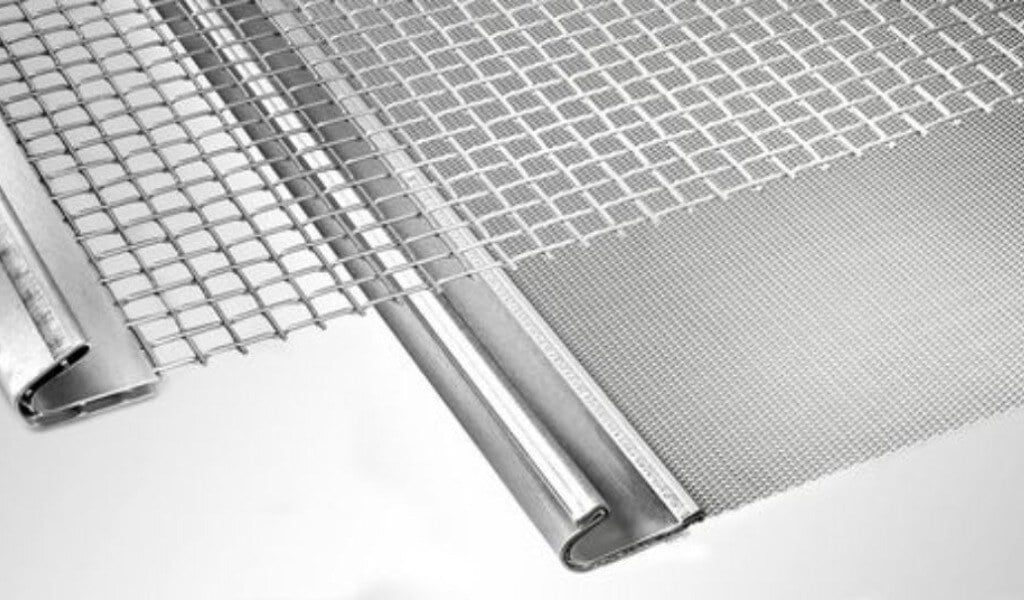Screen Section Percentage of Open Area: Understanding the Importance
There are many things that go into designing industrial wire screen sections that promote operational success. Of the many parameters that must be mathematically selected, the percentage of open area is one of the more important.
The percentage of open area is closely tied to your screen section's ability to produce accurate and repeatable results. Because of this, you must take the time to understand the ins and outs of this particular parameter.
Fortunately, W.S. Tyler strives to use our 150 years of wire mesh screening experience to equip you with the insight needed to optimize your screening process with tailor-made screen sections.
With that, this article will help you better understand the critical role of the percentage of open areas and what works best for you. You will learn:
- The fundamental parameters of industrial wire screen sections
- The definition of percentage of open area
- How the percentage of open area impacts screen section performance
- Picking the right percentage of open area
Screen Section Fundamentals
When referring to woven wire mesh, screen media is defined as a sheet of material outfitted with regular openings of the same size in a regular arrangement. The idea behind woven wire screens is simple: separate the coarse particles from the fine particles.
W.S. Tyler specializes in fine wire cloth screens.
This means that the finest opening screen sections we offer are 25 micron (500 mesh), and the largest is 10mm (½ inch).
That said, because the weaves are so fine, you will often need to experiment with the wire diameter to ensure your screen performs efficiently. As you alter the wire diameter of the same-sized opening, you will find that the percentage of the open area changes.
What Is the Percentage of Opening Area?
The percentage of open area of an industrial wire screen section is best defined as the number of pore openings of a screen versus the amount of space taken up by the wires. For example, if the specifications of your screen section create a high percentage of open area, your screen will feature more open area from the pore openings than closed area from the wires.

It is a critical metric in any given screening process as it is directly related to the amount of material that can be processed during a run. That said, to determine the percentage of a screen's open area, you simply have to take the total area of openings, divide it by the total surface area of the screen, and multiply that sum by 100.
How Does Percentage of Open Area Impact the Performance of a Screen Section?
The percentage of open area of a wire mesh screen section plays a massive role in its performance in various applications. For example, if you utilize a high percentage of open area, your screen section(s) will produce higher material throughput.
This subsequently will improve screening efficiency as it provides more chances for particles to pass.
However, higher open area percentages can sometimes lead to reduced structural integrity. This is because the increased openings mean there is limited material in the weave, thus less support.
If you maximize a lower percentage of open area, your screen sections will feature greater durability and a more precise cutpoint. This ultimately creates a stronger screen capable of more precise particle retention.
To that end, the reduced open area can bottleneck material flow and throughput, increasing the risk of blinding and pegging. This is particularly true when working with delicate or easily agglomerated material.
Considering all of this, fabricating the perfect screen section relies on you pinpointing the perfect balance of open area and wire diameter.
How Do I Know What Percentage of Open Area Is Right for Me?
Several things must be taken into consideration when determining the percentage of open areas of your screen sections. First and foremost is the profile of the material you will be screening.
Characteristics such as particle size, shape, and flow properties should all influence your decision.
Additionally, you will need to consider the needs of your process. For example, if your application processes fine particles in high volumes, you risk screen blinding.
Because of this, a higher percentage of open areas should be considered.
At the same time, if you are screening heavy, abrasive materials, you will want a durable screen. This would require a lower percentage of open area.
You will also want to consider a lower percentage of open area if precision and accuracy are key to operational success. As the percentage of open area decreases, particle retention capabilities improve.
You must find the perfect balance between all these factors. However, you will also need to include things like industry standards when making a decision.
Unlock Industry Leading Precision With the Right Hook Strips
The percentage of open area of an industrial wire screen illustrates the relationship between the amount of pore openings and closed-off space from the wires. It is critical to things like material flow rate, screen durability, screening efficiency, and operational efficiency.
But the percentage of open area means nothing if your screens arent brought into proper tension. Doing so requires you to outfit your screen sections with hook strips designed to fit your vibrating screens perfectly.
Here at W.S. Tyler, we pride ourselves on helping customer optimize their screening proces, from the hook strips to the final product. We do so by sharing our experience over the past 150 years so you can make informed decisions.
Read the following article to discover what hook strip applications will help project your screening process to greater heights:
About Ronnie Brown
Ronnie is the Content Writer for W.S. Tyler and has four years of experience as a professional writer. He strives to expand his knowledge on all things particle analysis and woven wire mesh to leverage his exceptional writing and graphic design skills, creating a one-of-a-kind experience for customers.




